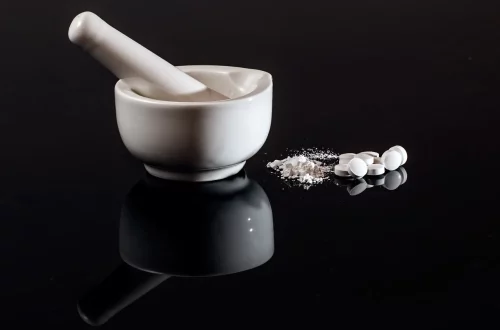
Effective Flea and Tick Spray: Protect Your Pets and Home Naturally
Maintaining a pest-free environment is essential for the health and well-being of both pets and their owners. Fleas and ticks are two of the most common parasites that can invade our homes and latch onto our furry friends, causing discomfort and potential health risks. These tiny invaders are not only a nuisance but can also lead to serious health issues if left unchecked. The challenge lies in finding effective solutions that are safe for both pets and humans.
Many pet owners are increasingly concerned about the use of chemical treatments that may pose risks to their beloved companions and families. Fortunately, there are natural alternatives to consider. Natural flea and tick sprays can provide a safe and effective means of protecting your pets and home from these pesky parasites. With the right ingredients and knowledge, you can create a pest-free environment that ensures the health of your pets and peace of mind for you.
In this article, we will explore various aspects of natural flea and tick sprays, including their benefits, how to make them at home, and the best practices for application. Understanding these elements can empower pet owners to take proactive measures against infestations while preserving their commitment to using safe, eco-friendly products.
Understanding Fleas and Ticks: The Threat They Pose
Fleas and ticks are more than just annoying pests; they can have serious implications for the health of pets and humans alike. Fleas are small, wingless insects that thrive on the blood of mammals and birds. They can reproduce rapidly, leading to infestations that can quickly take over a home. A single female flea can lay hundreds of eggs in her lifetime, making early intervention crucial.
Ticks, on the other hand, are arachnids that attach themselves to the skin of animals and humans to feed on blood. They are known carriers of various diseases, including Lyme disease, Rocky Mountain spotted fever, and anaplasmosis. The bite of a tick can lead to serious health complications if the tick is not removed promptly and correctly.
Both fleas and ticks can severely affect the comfort of your pets. Flea bites can cause itching, skin irritation, and even allergic reactions in some animals. Ticks can lead to lethargy, fever, and more severe health issues. The presence of these pests can also disrupt daily life, making it difficult for pets and their owners to enjoy outdoor activities.
Understanding the life cycle of fleas and ticks is vital in combatting them effectively. Fleas go through four stages: egg, larva, pupa, and adult. Ticks have a life cycle that includes egg, larva, nymph, and adult stages. Each stage requires different approaches for prevention and control. By recognizing the threat these pests pose and their life cycle, pet owners can take informed steps to manage and prevent flea and tick infestations.
Benefits of Using Natural Flea and Tick Sprays
Natural flea and tick sprays offer several advantages over traditional chemical treatments. One of the most significant benefits is safety. Many chemical products contain harsh ingredients that can be harmful to pets and humans, especially small children. In contrast, natural sprays often use essential oils and botanical ingredients that are less toxic and more environmentally friendly.
Moreover, natural flea and tick sprays can be just as effective as their chemical counterparts when used correctly. Ingredients such as peppermint oil, lavender oil, and neem oil are known for their pest-repelling properties. These natural alternatives not only deter fleas and ticks but can also leave your home smelling fresh and pleasant.
Another benefit of natural sprays is their versatility. They can often be used in various ways, including direct application on pets, treatment of bedding, and spraying around the home to create a protective barrier. This multi-use aspect makes natural sprays a convenient option for pet owners looking to maintain a pest-free environment.
Additionally, using natural products promotes a healthier lifestyle. The growing trend of holistic pet care encourages pet owners to consider the ingredients they apply to their pets and homes. By opting for natural sprays, you align with sustainable practices that benefit your pets and the environment.
Lastly, natural flea and tick sprays can be cost-effective. While some may argue that high-quality natural products can be expensive, making your own sprays at home can save money in the long run. With a few simple ingredients, pet owners can create effective pest control solutions without breaking the bank.
How to Create Your Own Natural Flea and Tick Spray
Making your own natural flea and tick spray is simple and can be done with ingredients you might already have at home. One popular recipe involves using essential oils known for their pest-repelling properties.
To create a basic flea and tick spray, you will need:
– 1 cup of water
– 1 cup of apple cider vinegar
– 10-15 drops of essential oils (such as lavender, peppermint, or cedarwood)
Begin by combining the water and apple cider vinegar in a spray bottle. The vinegar acts as a natural repellent while also helping to kill any existing fleas or ticks. Next, add the essential oils of your choice. These oils not only repel pests but can also provide a pleasant aroma.
After mixing the ingredients well, shake the bottle before each use to ensure the oils are evenly distributed. You can spray this mixture directly onto your pet’s coat, avoiding the eyes and nose. Additionally, it can be used on pet bedding, carpets, and other areas where fleas and ticks may lurk.
For added effectiveness, consider incorporating diatomaceous earth into your routine. This natural powder can be sprinkled in areas where your pet spends time, helping to kill fleas and ticks by dehydrating them.
Remember to perform a patch test on your pet’s skin before fully applying any homemade spray, as some pets may be sensitive to certain ingredients. Regular application, particularly during peak flea and tick seasons, can significantly reduce the likelihood of infestations.
Best Practices for Applying Flea and Tick Spray
To maximize the effectiveness of your natural flea and tick spray, it’s essential to follow best practices for application. First and foremost, ensure that your pet is comfortable during the process. Choose a calm environment and consider using treats or positive reinforcement to make the experience pleasant.
Before applying the spray, brush your pet’s coat to remove any loose fur and debris. This step not only helps the spray penetrate the fur more effectively but also allows you to check for any signs of fleas or ticks. Pay special attention to areas like the neck, behind the ears, and under the belly, as these are common hiding spots for pests.
When applying the spray, hold the bottle about 6-12 inches away from your pet’s coat and spray evenly. Avoid saturating the fur; a light misting is often sufficient. Be cautious around sensitive areas, including the face, ears, and paws. If your pet shows signs of discomfort, stop the application and consult with a veterinarian if necessary.
In addition to treating your pets, it’s important to treat your home and yard. Regularly vacuum carpets, upholstery, and pet bedding to remove any eggs or larvae. Consider using your natural spray in these areas as well, creating a protective barrier against re-infestation.
Consistency is key. Regular treatment, especially during high flea and tick seasons, can help keep your home pest-free. Monitor your pets for any signs of fleas or ticks and respond promptly if you notice any issues.
In conclusion, natural flea and tick sprays provide a safe, effective, and eco-friendly option for protecting your pets and home. By understanding the threats posed by these pests, utilizing natural solutions, and following best practices for application, pet owners can create a healthy, pest-free environment for their furry companions.
**Disclaimer**: This article is not intended as medical advice. For health concerns regarding your pets, please consult a veterinarian.




